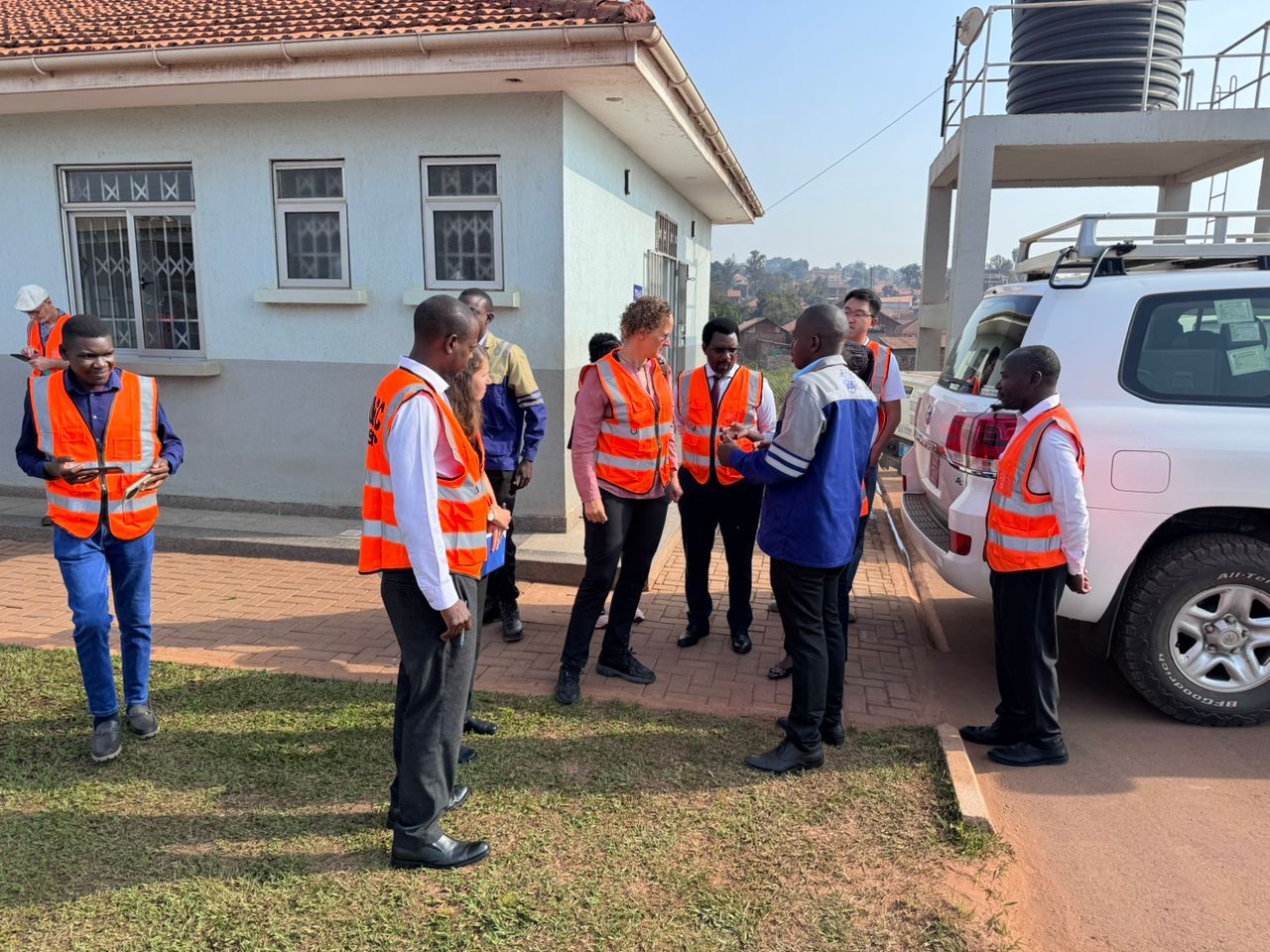KAMPALA: A delegation from KfW, Fitchner, Hebei Construction Group Co. Ltd, and the National Water and Sewerage Corporation’s (NWSC) Planning and Capital Development (P&CD) team, led by Senior Director Mr Paddy Twesigye, visited the Nalukolongo Faecal Sludge Treatment Plant to assess progress on ongoing works.
The visit commenced with a guided tour of the facility, conducted by Plant Manager Mr Phillip Tumwine, who explained the functions and operations of each treatment unit. This offered the visitors firsthand insight into the plant’s contribution to safe faecal sludge management in the greater Kampala Metropolitan.
After the tour, Senior Director Paddy officially welcomed the visitors and commended KfW for its continued support to the NWSC while he presented the background and establishment of the Kampala Water–Lake Victoria WATSAN Project, under which the plant falls.
In line with the purpose of the visit, the consultant made a presentation detailing the current project status, budget updates, Environmental and Social Management Plan (ESMP) implementation on site, and photographic documentation of progress.
For more insight, the assessment continued to the inspection of Planned Preventive Maintenance (PPM) works, which registered a “so far, so good” assessment mark.
To paint the picture of the Nalukolongo Faecal Sludge Treatment Plant (FSTP), it was built under the Kampala Water Lake Victoria Water and Sanitation (KW-LVWATSAN) project and is now fully operational as a key addition to Kampala’s sanitation infrastructure. With a capacity of 400,000 litres per day, the facility was developed to ease the burden on the overstretched Lubigi STP and extend services to premises not connected to sewer lines in Kampala and neighbouring Wakiso. Co-funded by KfW Development Bank (20 million euros), the French Development Agency (9 million euros), and the Government of Uganda (8 million euros), the plant is strategically located in the west of Kampala (Nalukolongo) to support the decentralisation of treatment facilities as envisioned in the Kampala Sanitation Masterplan.
Beyond improving efficiency, the plant is expected to reduce travel distances for cesspool trucks, ultimately lowering the cost of pit and septic tank emptying and making sanitation services more affordable for low-income households.












